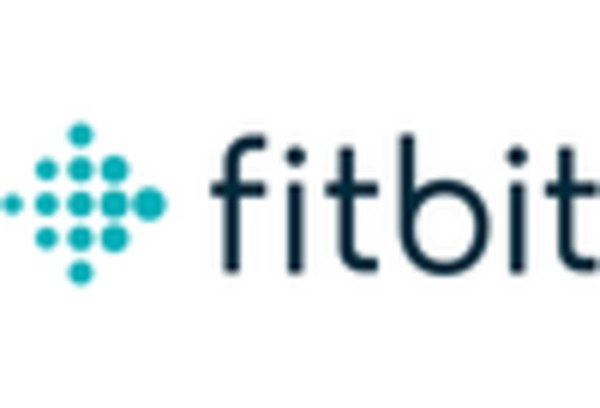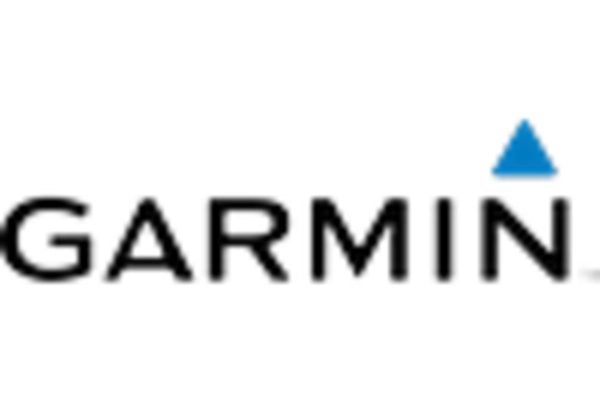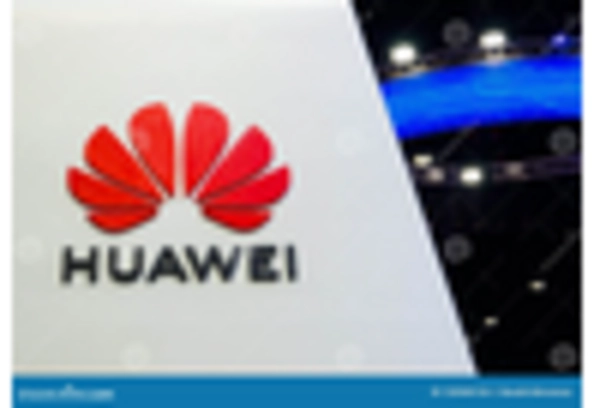Technological Advancements
Technological innovations play a crucial role in shaping the wearable tracking-devices market. The introduction of advanced sensors, improved battery life, and enhanced connectivity options has made these devices more appealing to consumers. For instance, the integration of artificial intelligence and machine learning algorithms allows for more accurate health monitoring and personalized recommendations. Market data suggests that the adoption of smartwatches and fitness trackers equipped with these technologies is on the rise, with sales expected to reach $30 billion by 2026. Furthermore, the development of new materials and designs has led to more comfortable and stylish devices, appealing to a broader audience. As technology continues to evolve, it is anticipated that the wearable tracking-devices market will experience sustained growth, driven by consumer demand for innovative and efficient health monitoring solutions.
Rising Health Consciousness
The increasing awareness of health and fitness among consumers is a primary driver for the wearable tracking-devices market. As individuals become more health-conscious, they seek tools that can assist in monitoring their physical activity, heart rate, and overall wellness. This trend is reflected in the market data, which indicates that the wearable tracking-devices market is projected to grow at a CAGR of approximately 15% over the next five years. Consumers are increasingly investing in devices that provide real-time feedback on their health metrics, thereby enhancing their fitness routines. The demand for such devices is further fueled by the proliferation of health-related applications and platforms that integrate seamlessly with wearable technology, making it easier for users to track their progress and set health goals. Consequently, this heightened focus on personal health is likely to continue driving growth in the wearable tracking-devices market.
Growing Popularity of Fitness Apps
The rising popularity of fitness applications is significantly influencing the wearable tracking-devices market. These applications often complement wearable devices by providing users with detailed insights into their health and fitness data. As consumers increasingly rely on technology to manage their fitness journeys, the integration of wearable devices with fitness apps has become essential. Market data reveals that the fitness app market is expected to reach $15 billion by 2025, which correlates with the growth of wearable tracking devices. This synergy between apps and devices enhances user experience, encouraging more individuals to invest in wearable technology. Consequently, the growing ecosystem of fitness applications is likely to drive further adoption of wearable tracking devices, contributing to the overall expansion of the market.
Rising Demand for Remote Health Monitoring
The demand for remote health monitoring solutions is becoming a pivotal driver for the wearable tracking-devices market. As healthcare systems evolve, there is a growing need for devices that enable patients to monitor their health from home. Wearable tracking devices facilitate this by providing real-time data on vital signs and activity levels, which can be shared with healthcare providers. This trend is particularly relevant in managing chronic conditions, where continuous monitoring is essential. Market projections indicate that the remote patient monitoring market could reach $50 billion by 2027, highlighting the potential for wearable devices to play a crucial role in this sector. As healthcare providers increasingly adopt telehealth solutions, the wearable tracking-devices market is likely to benefit from this shift towards remote health management.
Increased Adoption in Corporate Wellness Programs
The incorporation of wearable tracking devices into corporate wellness programs is emerging as a significant driver for the wearable tracking-devices market. Companies are increasingly recognizing the benefits of promoting employee health and wellness, leading to the implementation of initiatives that encourage physical activity and healthy living. By providing employees with wearable devices, organizations can monitor health metrics and foster a culture of wellness. Market analysis indicates that businesses investing in such programs can reduce healthcare costs by up to 25%. This trend not only enhances employee engagement but also contributes to improved productivity and morale. As more companies adopt these practices, the demand for wearable tracking devices is likely to surge, further propelling the growth of the wearable tracking-devices market.
















Leave a Comment